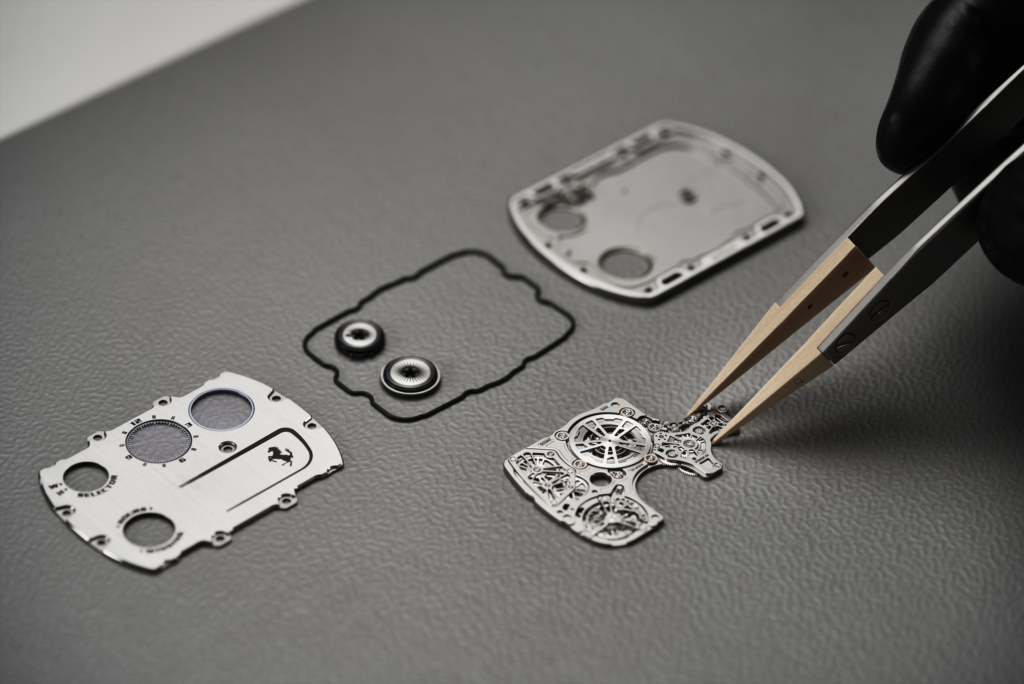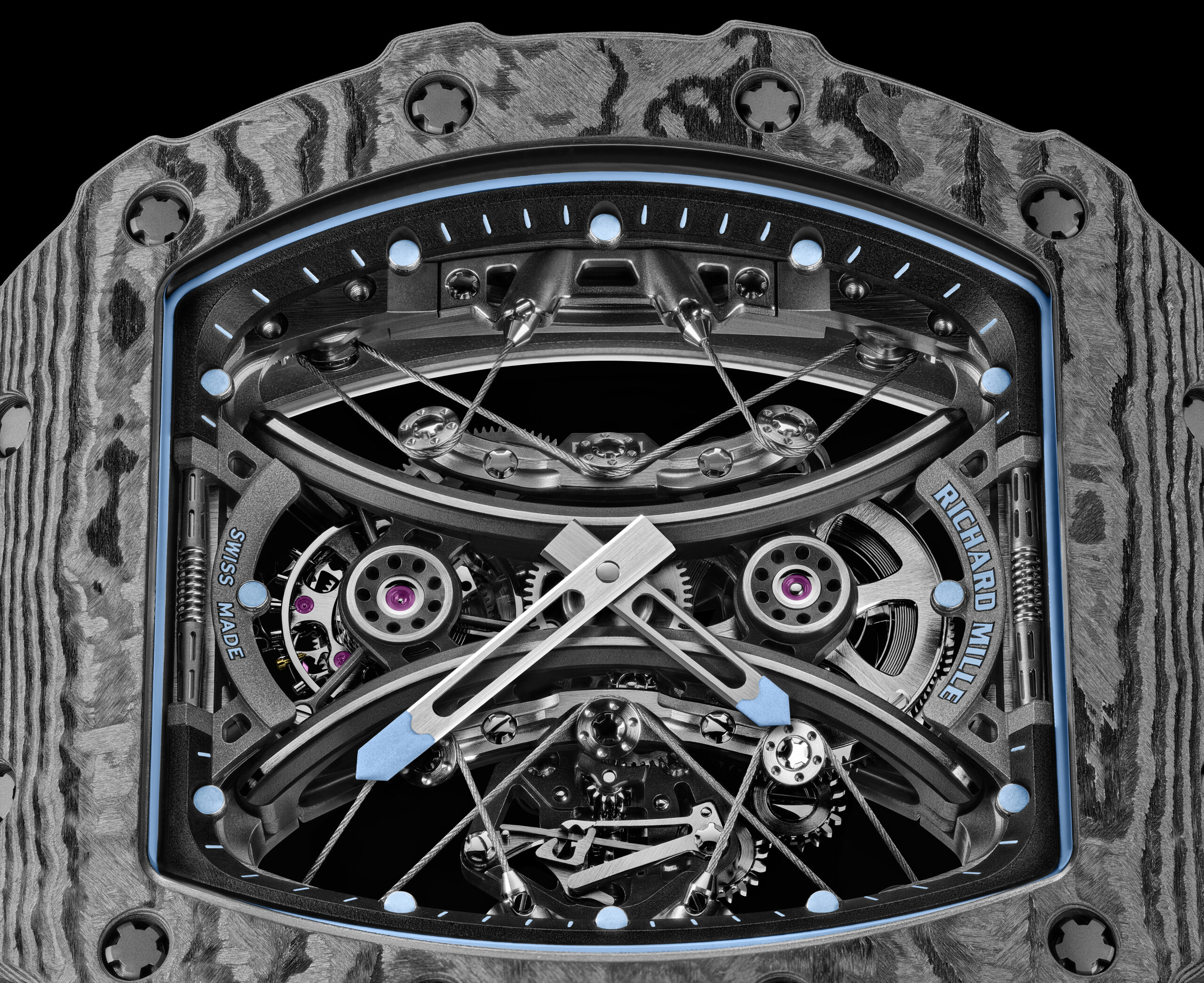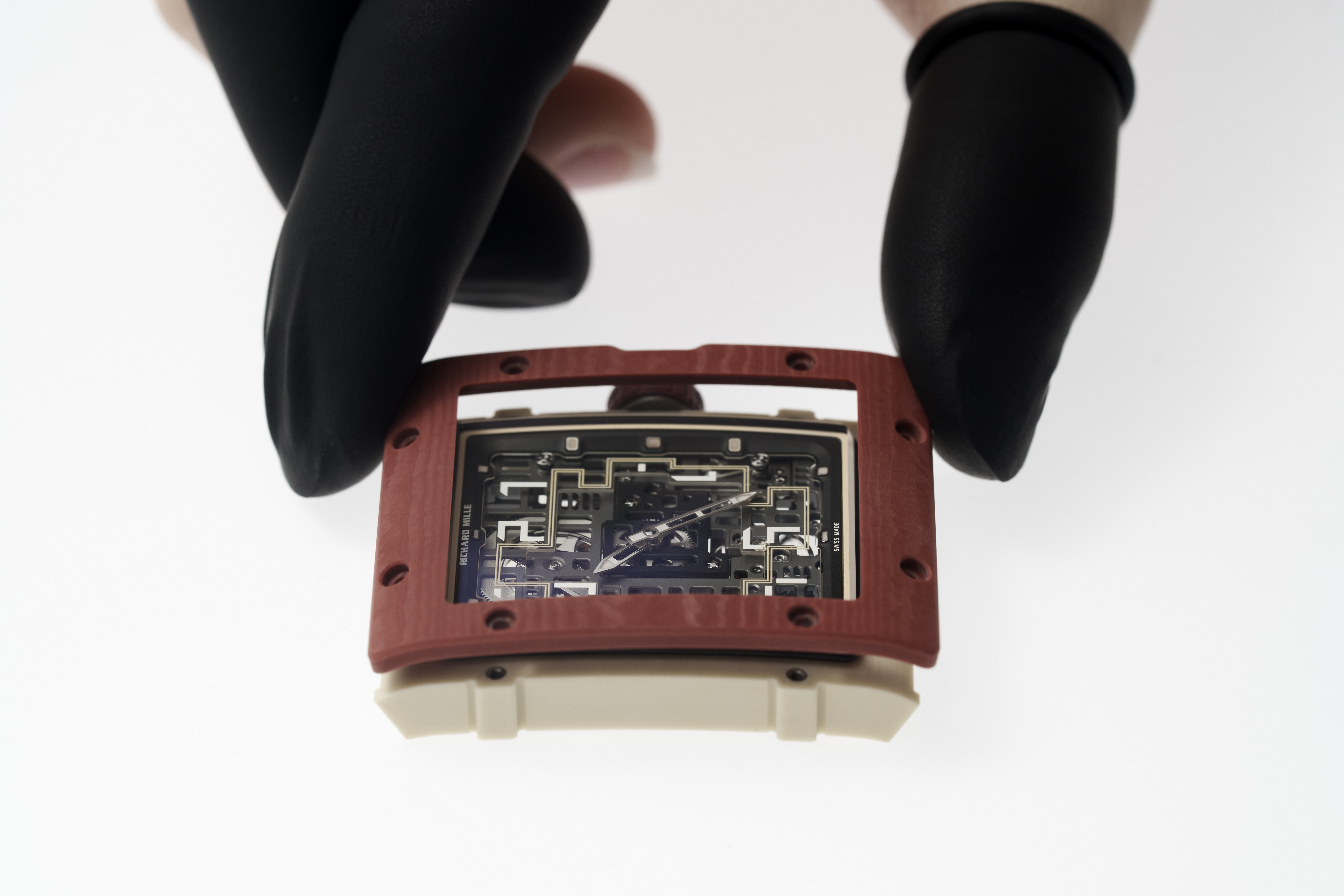News
From aerospace-grade materials to radical movement architecture, Richard Mille treats timepieces as a blank canvas for innovation. CEO Peter Harrison and Managing Director Tilly Harrison discuss pushing boundaries, defying convention and engineering watches for a world that does not yet exist
In an industry where heritage can sometimes be its own bind, Swiss horologist Richard Mille can appear more artist than watchmaker, treating each timepiece as a blank canvas where the past and its traditions are less an instruction manual and more a suggestion.
“At Richard Mille, we don’t see constraints as obstacles; we see them as opportunities,” says Peter Harrison, CEO of Richard Mille Europe, Middle East and Africa. Just don’t assume the brand’s defiance of watchmaking’s most ingrained principles is about rebellion for its own sake but rather the relentless pursuit of innovation.
To create watches that are lighter than expected, stronger than necessary and impossibly durable, Richard Mille engineers timepieces as if constructing them for a world that does not yet exist. It is a brand that operates at the intersection of performance and art, where the question is never what can be done? but rather what has never been attempted before?
In his role as CEO, Peter has been at the helm of the brand’s expansion, guiding its disruptive vision with a steady hand. His deep understanding of both collectors and craftsmanship has helped shape the Maison’s relentless pursuit of innovation. The success of the brand is also a family affair, with Peter working alongside daughter Tilly Harrison, who, as Managing Director, has taken an active role in evolving Richard Mille’s approach to materials, design and engagement with an expanding community of collectors. Together, they embody the duality that defines Richard Mille, rooted in engineering excellence yet constantly pushing forward, never bound by tradition but always refining the art of timekeeping.
Carbon TPT, Grade 5 titanium, graphene – materials more at home in aerospace and Formula 1 than on a watchmaker’s bench – are not just incorporated but pushed beyond their limits. “Traditional watchmaking relies on metals like gold, steel and platinum – beautiful, but limited in performance,” says Tilly. “We look at materials where strength and weight matter.”
“You don’t move forward by playing it safe,” she adds. “Leading this brand means making decisions that push the limits, trusting the expertise of our teams, and knowing when an idea, no matter how ambitious, is worth pursuing. If we had stuck to conventional thinking, we wouldn’t have developed shock-resistant tourbillons or sapphire cases that take over 1000 hours to machine. The goal is always to move the industry forward.”
Take the RM UP-01 Ferrari, one of the world’s thinnest mechanical watches, measuring just 1.75mm thick. Conventional wisdom dictates that reducing thickness compromises durability. Richard Mille did not see it that way, says Peter. “Rather than following the conventional approach of stacking components, we completely reimagined the movement architecture, positioning components horizontally within a Grade 5 titanium case.”

“Every Richard Mille creation is the result of years of meticulous research,” Peter tells ICON MENA. “If a timepiece cannot be worn in competition at the highest level, it does not align with our philosophy.” This philosophy is precisely why tennis champion Rafael Nadal could wear an RM 027 Tourbillon while launching himself across a tennis court or why Charles Leclerc can wear an RM 67-02 as he wrestles a Formula 1 car at 300 km/h. These are watches engineered to endure and excel under the most extreme conditions.
Yet even in this world of high-tech materials and ultra-performance engineering, there is an irreplaceable human element. For all the precision of CNC machining and material science, Richard Mille watches are still assembled, adjusted and finished by a single watchmaker from start to finish. That level of craftsmanship gives each piece its identity as something more than an instrument of measurement, becoming an artefact of human ingenuity.
Richard Mille’s dedication to breaking convention is not limited to materials or engineering. The brand’s design philosophy extends to every aspect of the watch’s form, questioning the assumptions of traditional haute horology. Where most watchmakers treat dials and cases as separate elements, Richard Mille approaches the watch as a single integrated structure, a seamless fusion of movement, casing and strap. “The traditional approach to watchmaking separates the case, movement and strap as distinct elements,” says Tilly. “We’re looking at ways to merge these components into a single structure.”
This ethos is perhaps most evident in the RM 53-01 Tourbillon Pablo Mac Donough. Designed for professional polo, a sport where high-speed collisions and the force of a mallet strike could shatter traditional watch glass, the RM 53-01 had to be built differently. The solution was a Carbon TPT case with sapphire laminated glass, making the watch virtually unbreakable. Inside, the movement is suspended by braided steel cables to create a system that absorbs shocks while keeping the tourbillon floating in perfect alignment.

None of this is done for spectacle alone. Every experiment, every material, every new way of rethinking a watch’s architecture serves a functional purpose. “Because everything we experiment with has a purpose,” says Tilly. “We don’t introduce new materials or designs just to be different – it’s always about performance.”
That principle extends to collaborations as well. While many luxury brands align themselves with ambassadors for marketing clout, Richard Mille sees partnerships as an extension of its own technical ambitions. Its relationship with Nadal, for instance, was not about having a famous wrist to advertise its watches. It was about the process, rising to the challenge of engineering a timepiece that could survive the vigorous accelerations and sudden impacts of professional tennis.
Truly, few figures have been as deeply entwined with the Richard Mille brand as Nadal. The Spanish tennis legend has been a close collaborator since 2010, with each of his Richard Mille watches designed as much for the sport as for the wrist. Nadal’s timepieces are not trophies for press conferences or post-match interviews – they are battle-tested, subjected to the full force of his blistering forehands and high-speed lateral movements.
One of the most striking examples of this partnership is the RM 27-03 Tourbillon, a watch designed to endure the chaos of the court while embodying Nadal’s national pride. Its case, set in the bold red and yellow of the Spanish flag, is as much an aesthetic statement as a technical feat. Only 50 of these watches exist, each built to withstand up to 10,000 Gs of force – an almost absurd level of durability in any context, let alone on a tennis court. And yet, for Richard Mille, overengineering is not a quirk; it is the brand’s very ethos.
“Every new model must challenge convention while remaining unmistakably Richard Mille,” says Peter. “Whether through pioneering materials, reimagining movement architecture, or pushing the boundaries of design, our objective is always to redefine the standards of haute horology. The key lies in evolution – constantly refining, improving and innovating while staying true to the values that set us apart.”
Richard Mille has always been a brand that subverts expectations. The RM 16-02 Automatic Extraflat, which was released in January this year, is no exception. Departing from the brand’s signature tonneau-shaped case in favour of a strikingly minimalist square, the RM 16-02 embraces sleek modernism while maintaining the technical ingenuity that defines the brand’s oeuvre.

The design takes cues from brutalist architecture, with a monolithic rectangular silhouette that distils the Richard Mille aesthetic down to its most elemental form. Within this rigid geometry lies a skeletonised CRMA9 movement crafted from Grade 5 titanium. Its openwork design allows light to dance across the chamfered edges of the bridges and gears. At just 4.12mm thick, the movement’s extra-flat construction is precise, balancing aesthetic restraint with mechanical sophistication.
Despite its streamlined proportions, the RM 16-02 remains robust. A platinum-weighted rotor and OneWay winding system plus ceramic ball bearings ensure efficiency without adding bulk. The free-sprung balance with variable inertia increases long-term reliability, while a 50-hour power reserve guarantees robust performance. Even the dial is a feat of precision – a labyrinth of negative space inspired by the myth of Ariadne’s thread, guiding the wearer’s eye through the depths of the skeletonised movement.
The RM 16-02 watch challenges assumptions about what a Richard Mille timepiece should be. It is an exercise in discipline, demonstrating how the brand can distil its boundary-pushing ethos into something radically simple yet unmistakably Mille.
This may be why Richard Mille does not behave like other watch brands. It doesn’t play to nostalgia or rely on the weight of history to give it legitimacy. It has no grand complications simply to prove technical prowess, no decorative flourishes meant only to please collectors. Instead, it builds watches with a clarity of purpose: to push horology forward, challenge assumptions and create something that cannot be ignored.
If tradition dictates that a watch is a vessel for measuring time, Richard Mille argues that it can be so much more. Time, to the brand, is a blank canvas. One that invites reinterpretation, reinvention, and reimagination. This focused attention on the future, however, still comes with a responsibility to keep time ticking, says Tilly.
“Richard Mille is responsible for preserving and passing on the craft of watchmaking to future generations,” Tilly says. “At our manufacture in Les Breuleux, we run an apprenticeship programme where students aged 13 to 16 receive hands-on training in traditional watchmaking techniques, while also being immersed in the cutting-edge advancements that define our brand.”